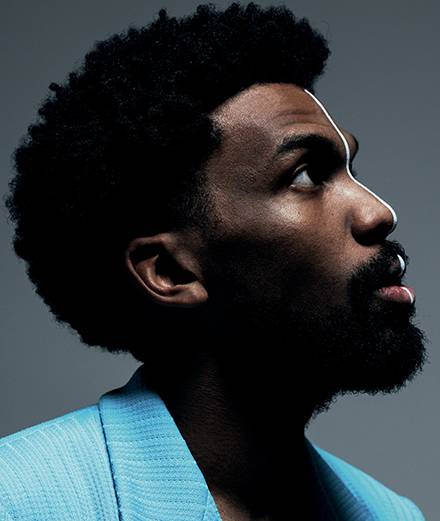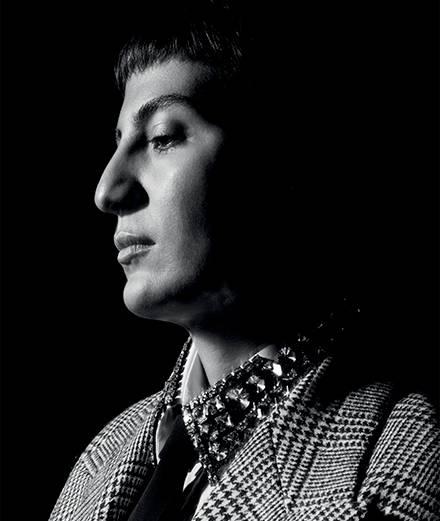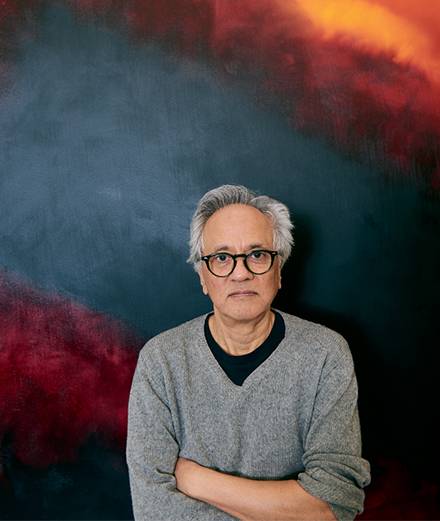Pierre Paulin (1927-2009) has never been so feted. After being honoured by Louis Vuitton and Nicolas Ghesquière, notably at Design Miami in December 2014 where previously unpublished drawings from the 1970s were presented, the Pompidou Centre is holding a dedicated exhibition this coming spring and for the last few weeks there’s been an original and highly seductive exhibition of his work at the Galerie Perrotin. Until December 19th, creations – again many never shown before – dialogue with works by some of the biggest contemporary artists, from Bertrand Lavier to Elmgreen & Dragset. Within the sumptuous gallery space we see the sensual functionalism of his oeuvre, his research into materials (elasticated fabrics and foam) and the modularity of shapes that made him famous. For Numéro Benjamin Paulin looks back at his father’s incredible adventures from the 1950s to the 2000s.
Numéro: In what way was Pierre Paulin, from his earliest works, a visionary designer?
Benjamin Paulin: My father was born in France in 1927. He grew up and took his first steps as a designer here, but he quickly realised that French design hadn’t evolved with modernity. Furniture wasn’t adapted, at least in terms of size, according to habitations and new post-war lifestyles. He was even more conscious of this after his trip to Scandinavia in 1951 where design was being completely revolutionised. Discovering editors who had already taken into account this modernity in motion, such as Knoll and Herman Miller (of which American designer George Nelson was made director of design in 1945), also played a major part in his approach. However his willingness to adapt French design to the era wasn’t done in an iconoclastic way, he didn’t erase all traces of the past. On the contrary, my father wanted to take what existed into the future.
Isn’t the futurist aspect of his work dated?
His vision of the future has actually become something of a classic. The furniture my father made during the 1960s, in tune with the future as perceived at the time, still fits in with our current perceptions. So you’ll see pieces by my father in films like Avengers or Iron Man used to symbolise a “futuristic” interior. And I think that tour de force comes from the fact he wasn’t seeking a purified gesture or aesthetic. His work was always about solid technical research. The aesthetic always came as a result of technique and, of course, the vision of the person who makes it their own.
We often think of his work as restricted to the 1960s but Pierre Paulin’s oeuvre is much more eclectic than that. What were the most important creative periods in your father’s life?
He’s even been labelled a pop designer although he never saw himself as part of that movement, or any movement for that matter. He questioned his work throughout his life. In the 1950s he was mostly interested in wood, inspired by Scandinavian and American designers, all while adding his own poetry, finesse and lightness. Then at the end of the 1950s he discovered Stretch fabrics that allowed him to compose new shapes for a dozen or so years. They became more organic, the feet are no longer visible… Then he became interested in modularity, of which Ensemble Dune and the Tapis-Sièges being shown at the Perrotin Gallery are fine examples. Everyone can combine different elements, assemble and take them apart at will, and becoming as a result the architects of their own interior. Then he started down a new path by getting seriously involved with industrial production. He modernised everyday objects like the iron where he put a water reserve into the handle. He spent 15 years creating like this. Finally, and this is undoubtedly the least known period of his oeuvre, my father went back to a more traditional and artisanal production focusing on noble materials. He revisited the classics with his own modern vision. From this final “classic” period, the gallery is showing the extraordinary Cathédrale table of 1981 that aligns engineering with the curves of gothic architecture. My father saw this as his masterpiece. This was also the time when he decided to do, particularly for his exhibition at the Arts décoratifs in 1983, limited edition pieces, even though democratisation and industrialisation were all the rage. It was a commercial disaster. And yet he was at the forefront of what’s happening today.
Why was his work received so ambivalently?
Ambivalent, yes, that’s the least we can say. France is unfortunately often the last to show interest in its own creative people. I think even Monsieur and Madame Pompidou, who asked him to decorate their private apartments at the Élysée in 1971, had discovered Pierre Paulin in the mid-sixties at a MoMA exhibition. The New York museum was the first to recognise the strength and originality of my father’s work, particularly with the stretchy fabrics and foams… He’d already revolutionised design and no one in France even realised.
A wonderful aspect of the Galerie Perrotin exhibition comes from their highlighting of the extreme sensuality of Pierre Paulin’s furniture.
His furniture melds into the form of the human body and comfort was effectively central to his pre-occupations. The hyper-realist sculpture of the lascivious female nude by John De Andrea, sitting or lounging on Ensemble Dune emphasises this sensuality. Just like Elmgreen & Dragset’s performance piece (also featured at the 2009 Venice Biennale) where a nude young man reads a books on a F444 armchair, oblivious to gallery visitors.
By exhibiting Pierre Paulin in a contemporary art gallery, and soon at the Pompidou Centre, is this a way of giving the designer artistic status?
My father would never have accepted that. He held artists in very high esteem. In his opinion they should remain alone against the world and refuse all compromise… quite the opposite of a designer, who must comply with technical norms, a market and a clientele. But these days art has become an industry too, so much so that my father’s artistic vision can be more easily integrated into the art field.
“Paulin, Paulin, Paulin”, at the Galerie Perrotin in Paris, until December 19th, 76, rue de Turenne, Paris, 3rd. www.perrotin.com
Paulin, Paulin, Paulin is a structure founded in 2008 by Pierre Paulin’s wife and son, joined by his wife Alice Lemoine, to highlight the designer’s work. It produces creations, often originals, with the support of Michel Chalard, who was Pierre Paulin’s closest technical collaborator.

















